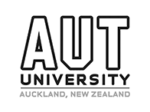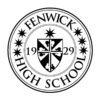Engagement Tile Use Cases

Use Cases and Set-Up Guides
Auckland University of Technology

AUT is the second-largest university in New Zealand with 100,000 alumni around the world.
Good Stewardship
- Large alumni database
- Activity frozen in 2012
- Were about to build manual systems to figure out who to re-engage with…
- FOUND the Engagement Tile
Engagement Score Values
- 3 donor measures
- Featured in AUT media
- Provide internships to graduates
- if they are an Alumni
- Event attendance (via RE7 Queries)
- Other constituent attributes
MVPs
- Donations esp. larger gifts
- Still Tuning!
How do they action the results?
- Find “forgotten donors”
- Implement an effective stewardship program
- …with a small team
Fenwick High School

Fenwick is a co-ed Catholic high school located in the Chicago suburbs.
They have a generational model of supporters
- alumni,
- current students,
- parents of current students
- parents of alumni.
Relationships Tree
They have many multiple generation families in the database, and all individuals are connected to one another in the Relationships Tree tile.
Engagement Score Values:
- Wealth Ratings, time since last gift date
- Email history data
- Custom-built lists related to the number of relationships on Relationship Tile
- The highest score points are given to the most recent gifts and the highest number of relationships
MVP’s
- Most recent Gifts
- No of relationships
How do they action the results?
- Weekly review of Top Constituents and Movers Up
- Ensure that those individuals are in one of their gift officers’ portfolio
Customer Story

We recently talked to Craig, the Director of Advancement Business Intelligence at Auckland University of Technology in New Zealand about their recent trial and why they decided to continue using Engagement Tile to score their constituents.
“It is so good I am tempted to keep it a total secret!“
AUT is now using it to immediately visualise their key constituents so they can manage the implementation of an effective stewardship program as well as manage “forgotten donors” with a small team.
Check out some other takeaways from our Q&A. We hope it encourages you!
